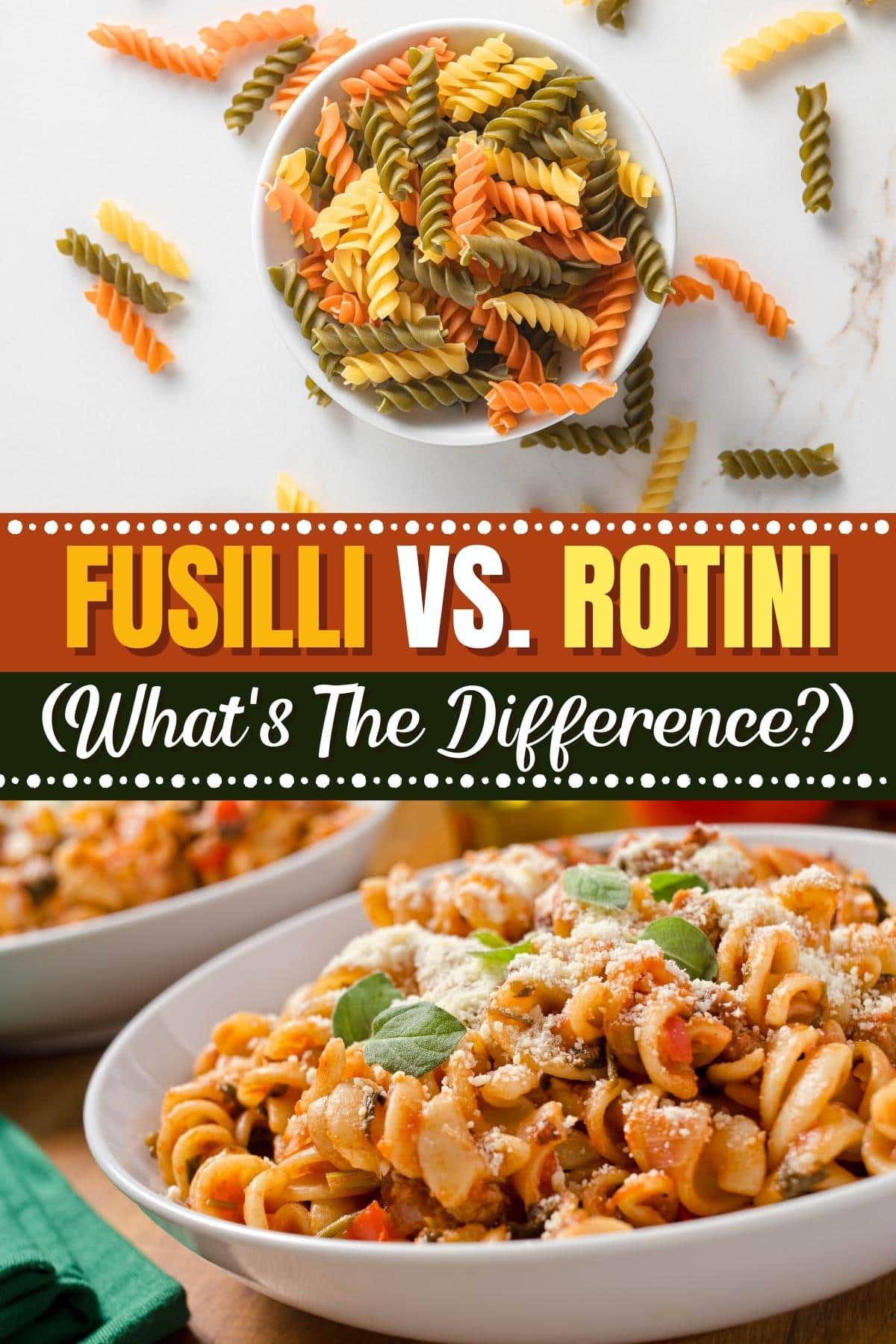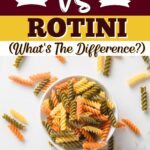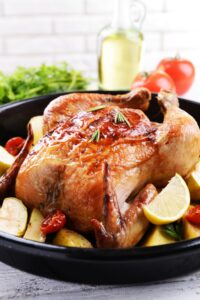What’s the difference between fusilli vs. rotini pasta? Fusilli is spiral-shaped pasta with a tighter twist and smoother surface. Rotini has a shorter, corkscrew-like shape and a ridged texture.
At first glance, these two spiral-shaped pastas may appear alike. But their subtle differences can have a significant impact on your cooking.

Both hold sauces well, but fusilli’s twists are more pronounced, making it ideal for thicker sauces. Rotini’s shape allows it to capture chunky sauces and ingredients effectively.
So, let’s dive into the world of pasta and unravel the distinctions between fusilli and rotini. Get ready to elevate your pasta game with this ultimate comparison!
Fusilli vs. Rotini (What’s the Difference?)
Do you know how many types of pasta there are? Believe it or not, there are hundreds! And some of them can be difficult to tell apart.
Fusilli and rotini are twisty coils of pasta. If you examine them closer, you’ll notice some differences. For one thing, rotini is shorter than fusilli, though not by much.
Its twist is also tighter and more corkscrew-like than fusilli. Fusilli is longer and more loosely coiled. It’s more like an actual spring than rotini.
Because of its tighter coils, rotini holds sauce better than fusilli. Fusilli’s larger gaps between the twists don’t trap the sauce as well.
The next difference between the two is much more apparent.
Fusilli often comes in various colors, including orange, black, yellow, and green. It isn’t always colored, but when it is, it’s easy to tell it apart from rotini. (Which rarely comes in colors.)
The two pastas’ textures and tastes are very similar. They’re mild and absorb the flavor of whatever sauce and ingredients are in the pasta dish.
Colored fusilli sometimes gets its colors from additives like spinach and beetroot. Those ingredients can slightly influence the taste but not by much.
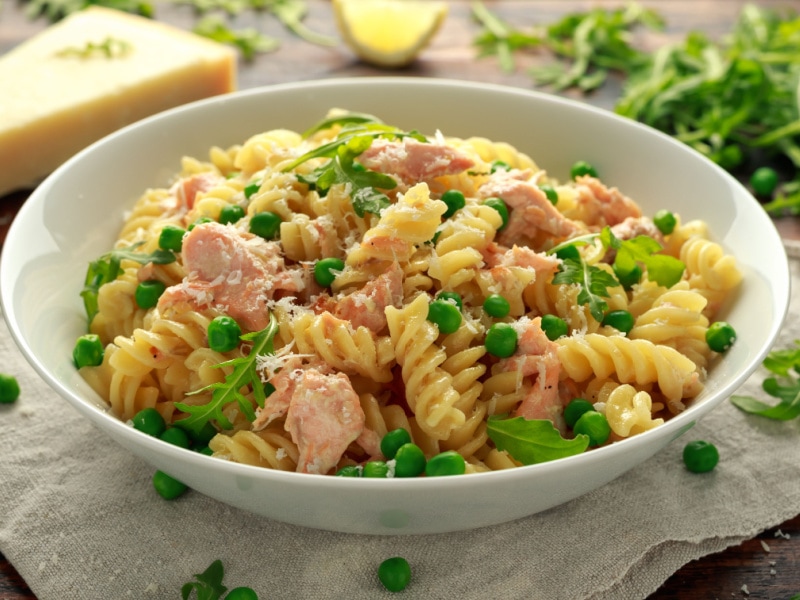
What Is Fusilli?
Pronounced few-silly, fusilli is a type of short-cut pasta made from semolina. It comes from Southern Italy and takes its name from the Italian word for spindle, fuso.
The gaps between the curls allow fusilli to trap or hold sauces. Therefore, it’s best served with thick sauces or creams. Most grocery stores sell it in dried form, but you can also find it fresh.
There are multiple varieties, including whole-wheat, plain, and colored varieties. There are also variants of fusilli that have slightly different shapes.
How to Cook Fusilli
To cook fusilli, simply boil your water and add plenty of salt. Once the water boils, pour in the dried fusilli.
Check the package for instructions on how long to cook the pasta. Typically, 12 minutes is the sweet spot. But you may need more or less time, depending on how much you’re cooking.
Remember to stir the pasta for the first 4 or 5 minutes to prevent sticking. After that, you can leave it to cook undisturbed.
Finally, drain the water with a colander or pasta strainer. Then, top the fusilli with your desired sauce. Season it with herbs and spices. Then, add whatever ingredients are left.
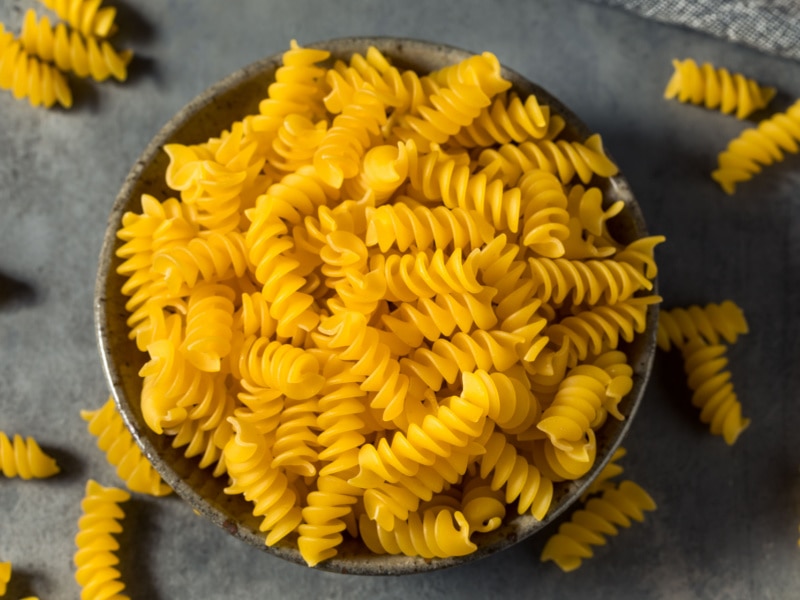
What Is Rotini?
Pronounced row-teeny, rotini is also a short-cut type of pasta. It features a corkscrew-like shape similar to fusilli. Unlike fusilli, rotini’s shape is more tightly twisted.
It originally comes from Northern Italy and is also made of semolina flour. Its name simply means twists. (Though, interestingly enough, the word rotini is not a real Italian word.)
Like fusilli, rotini has its variants. You can occasionally find colored rotini, though it’s rarer than multi-colored fusilli. Additionally, there’s whole wheat rotini and other varieties.
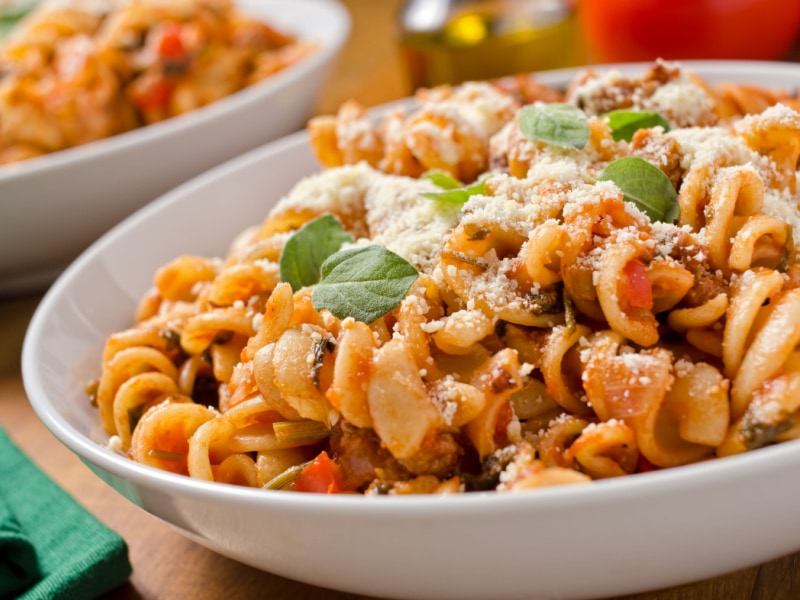
How to Cook Rotini
The method for cooking rotini is the same as cooking fusilli. Add plenty of salt to a pot of water and heat it to boiling. Then, pour in the pasta.
The primary difference is rotini requires less time in the water. Usually, it’s ready to drain after about 7 to 10 minutes. However, you should always look at the package instructions to be sure.
Once it’s ready, drain it with a colander and add your sauce and other ingredients.
Can You Use Fusilli and Rotini Interchangeably?
If you’ve been mislabeling and mistaking these pastas for each other for years, don’t worry. Besides the slight differences in their shapes, they’re pretty similar.
You haven’t ruined any recipes by using the wrong pasta. You can use fusilli and rotini interchangeably. They feel and taste basically the same.
Unless you tell people, most won’t even realize you’ve made a swap.
Substitutes for Fusilli and Rotini
As mentioned, there are hundreds of types of pasta available to choose from. With that kind of selection, it’s easy to find a suitable substitute for either fusilli or rotini.
The substitutes won’t look the same, but they’ll work just as well for the most part. Here are my favorite replacements for fusilli and rotini:
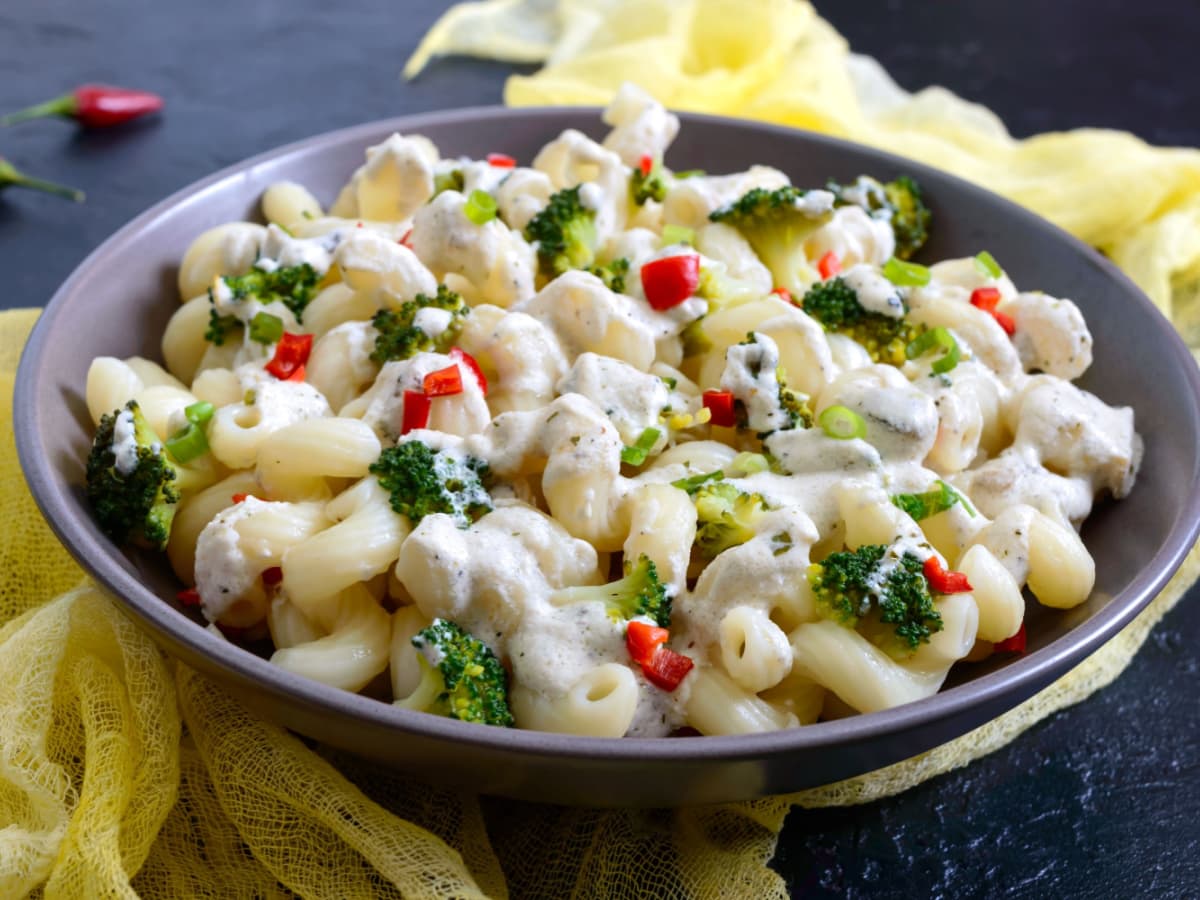
Cavatappi
Also known as cellentani, cavatappi makes an excellent substitute. Though larger (wider and longer) than both, it has the same twisty, spiral shape.
Its name actually comes from the Italian word for corkscrews. That alone tells you all you need to know about its usefulness as a substitute.
Other than size, the primary difference is that cavatappi is a hollow noodle. In many ways, that makes it even better than fusilli or rotini.
Not only do the spirals catch the sauce and other ingredients, but so do the hollow tubes.
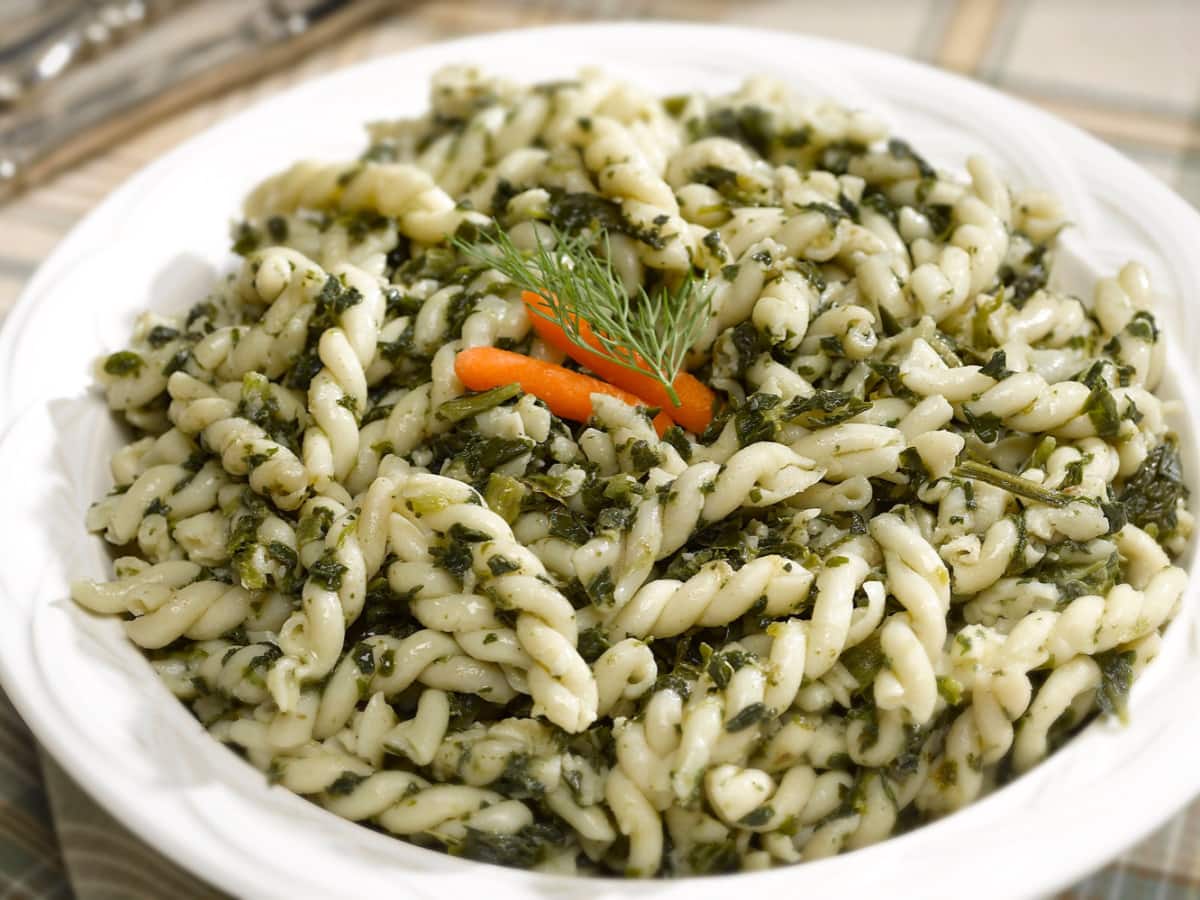
Gemelli
Have you ever twirled two ribbons together by twisting their ends? That’s sort of what Gemelli pasta looks like. Its name means twins, and it’s made of a single S-shaped strand of pasta.
The strand is folded in half and then twisted back around itself. This gives it a similar shape to both rotini and fusilli. It can also lock in sauce and other ingredients.
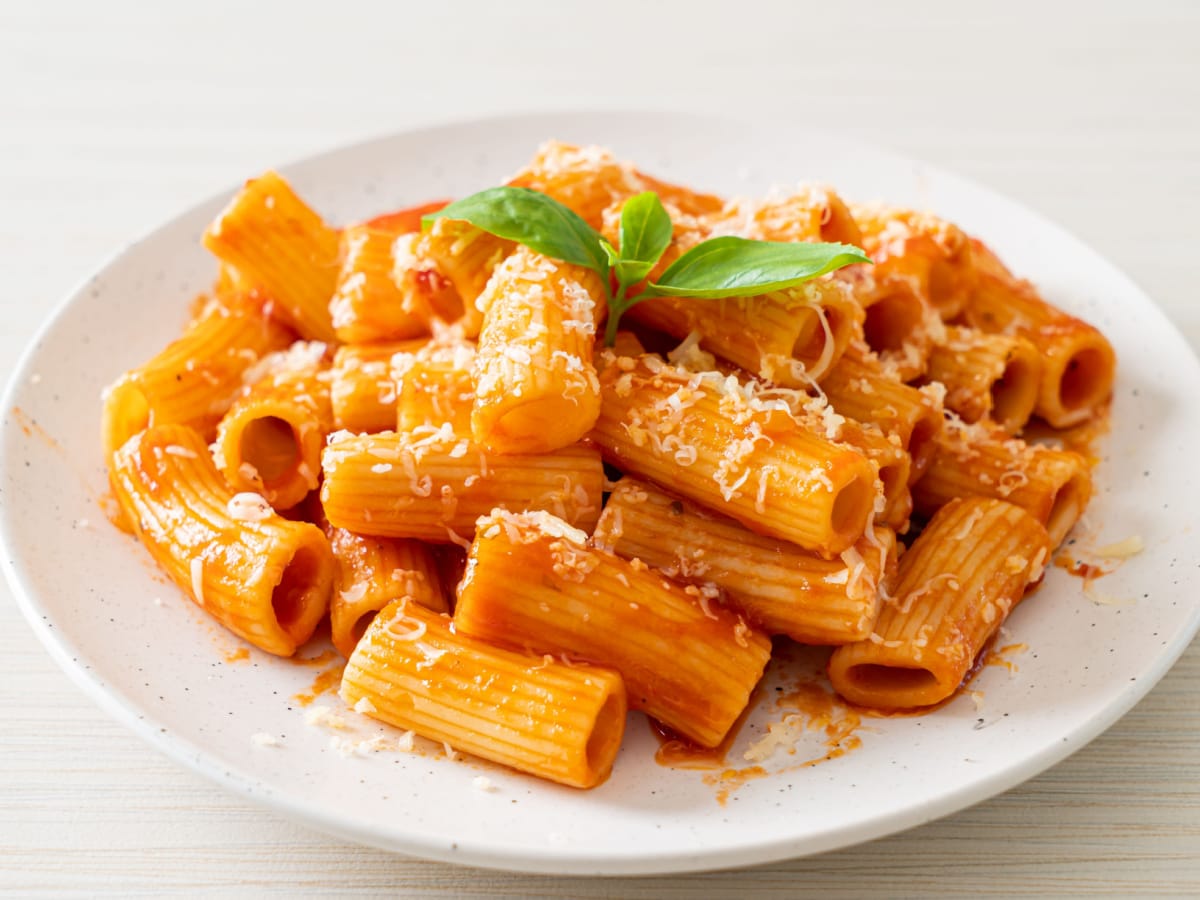
Rigatoni
Rigatoni, or ridged pasta, are small, hollow tubes about an inch long. They’re slightly curved and have noticeable ridges on the outside.
Both the ridges and the hollow centers make the pasta an excellent choice for holding sauce. Rigatoni especially works well with thicker, chunkier sauces.
It’s also a good choice for dishes with lots of cheese and baked pasta.
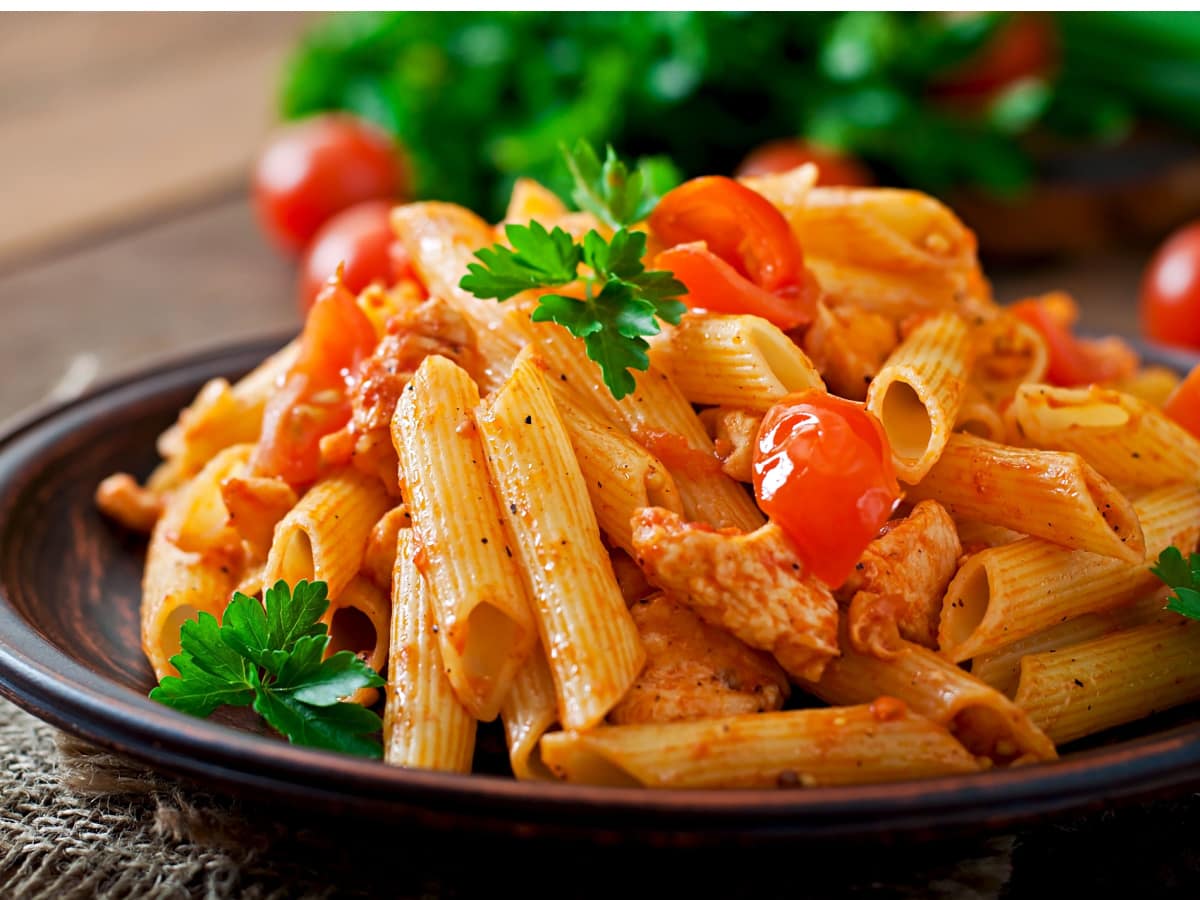
Penne
Like rigatoni, penne are short, hollow tubes with ridges on the outside. Unlike rigatoni, penne pasta is straight, and its ends are cut on a diagonal.
Its ridges and hollow center work the same way as rigatoni’s. It’s great for baked pastas, cheesy dishes, and recipes with thick, chunky sauce.
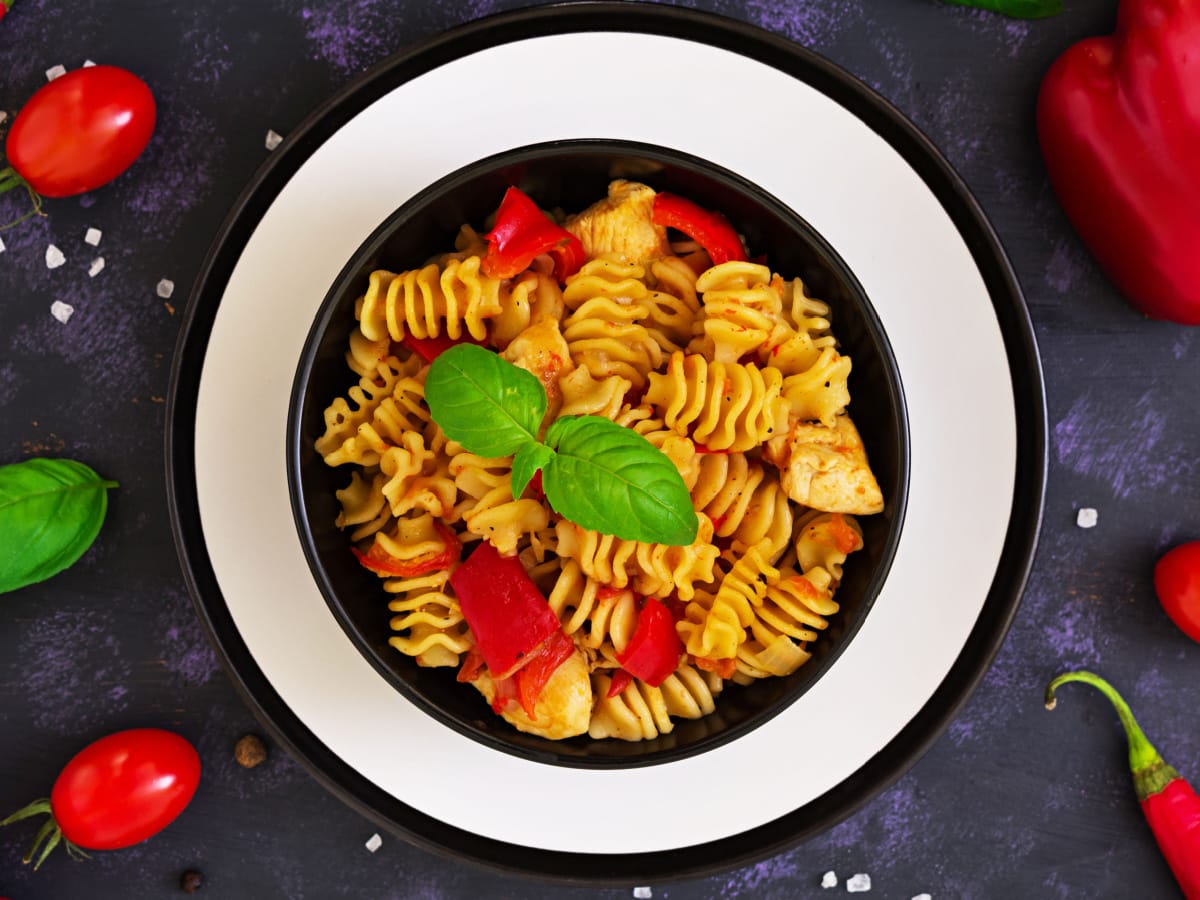
Radiatore
Radiatore pasta is one of the most oddly shaped pastas ever. It actually looks like a bowl of tiny radiators. (Hence the name.)
It’s shorter and thicker than rotini and has small, fluted edges. It has plenty of ridges for holding sauce, cheese, and other ingredients.
